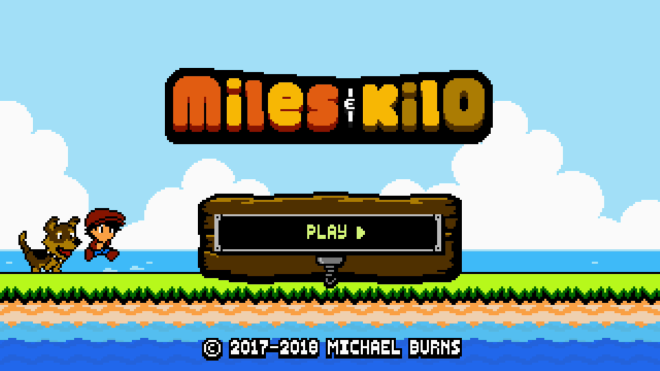
Can Stop, Won’t Stop
The 8-bit era is one I remember fondly. Even games I played only once or twice at a friend’s house have earned a piece of real estate in my memory and, in some cases, my heart. So when I played Kid Tripp a few years ago on my iPhone, and back in November on the Switch, that sense of comfort and nostalgia came flooding back to me thanks to chunky pixel graphics, a catchy chiptune soundtrack, overt retro influences, and the accessible-yet-challenging gameplay. And I’m happy to say that Miles & Kilo, the sequel to Kid Tripp, has accomplished a similar feat while expanding further on what the original did so well.
These two runners – which play much like side-scrolling, action-platformers – were designed to be smartphone-friendly. That’s where each began life. Yet, fortunately, whether docked or in handheld mode, the experience translates quite naturally to the Nintendo Switch. And perhaps Miles & Kilo feels even more at home on a console than its predecessor; it’s slightly more complex mechanically and requires just a bit more finesse that benefits from a D-pad and actual buttons as opposed to a touchscreen, partially attributed to a newfound freedom that wasn’t present in Kid Tripp.
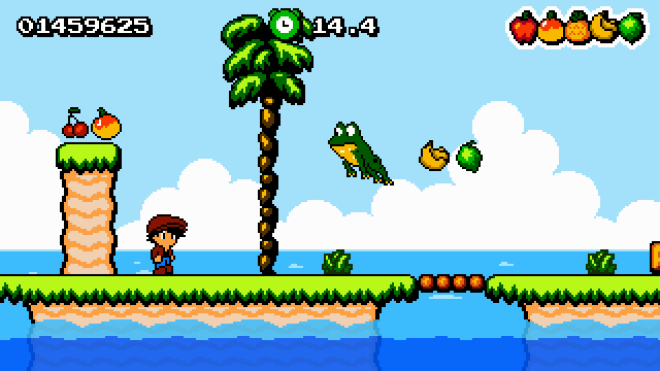
That’s because, instead of constantly propelling you forward like a typical auto-runner, you can move Miles left or right as you desire. This is the default control setting. It’s a difficulty balancer more than anything, as it allows players to have a moment of thought and patience when navigating the more dangerous and rhythmically enigmatic chunks of the levels. However, staying in motion – and discovering and mastering the intended cadence of actions through the 36 total levels – is the best reward, and yields the best score. Personally, I turned on the “auto-run” option about halfway through my playthrough and never looked back, not even when the going got tough – and the going does get tough.
So that’s one thing that differentiates Miles & Kilo from Kid Tripp – the freedom of movement. But what else is here that’s shiny and new? Quite a bit, actually. The most obvious is Kilo, Miles’ frisky canine buddy and recurrent form of transportation. When Kilo shows up in a level, he abruptly tugs Miles along at a brisk pace, offering no option to pump the brakes or change direction. The main benefit here is that Kilo can target and dash into enemies, which functions much like the homing mechanic introduced in the 3D Sonic The Hedgehog games. This allows you to remain airborne longer than a traditional jump, so you can clear large gaps and avoid any other threats on the ground below. Combining this move with an normal extended jump can occasionally cause a fumble and death, but you’re back in action so quickly – almost immediately – that you’ll barely have a moment to whimper.
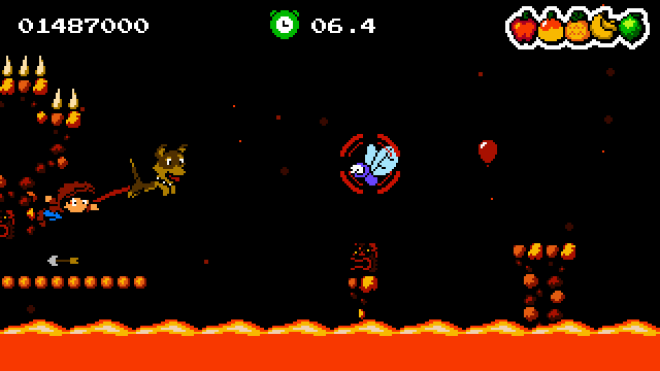
There are numerous other ways that Miles & Kilo sequelizes itself, putting emphasis on variety this time out, even if gameplay doesn’t deviate too far from the run, jump, and throw-fruit formula. Level variety, in terms of setting and appearance, isn’t as diverse as it could be – which also applies to the five worlds and their seemingly repeating themes – but there’s plenty new to be found in the gameplay to make up for it. For example: Surfing and minecart sections are a nice surprise when they show up; new enemies/dangers pose new problems; ziplines and wall jumping in designated areas add additional layers to traversal; and dashing underneath hazards and punching through walls means there’s more to be prepared for. Furthermore, each of the five worlds – now fitted with a generic-but-appreciated world map – culminates in a boss battle, making the game feel more like an adventure than a just a random collection of bite-sized challenges conceived to be consumed on the go.
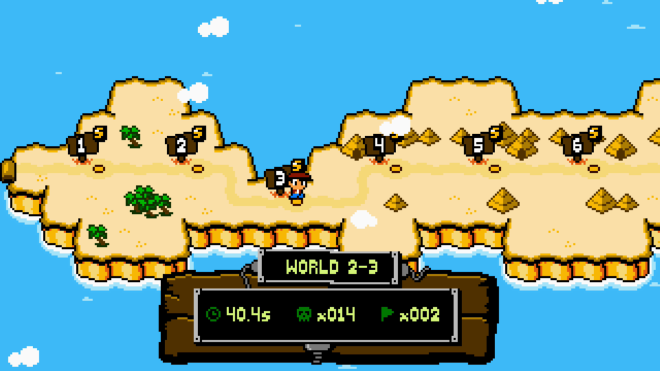
Speaking of challenge, even though there’s no shortage of new elements here, Miles & Kilo features a difficulty curve that’s less harsh than its predecessor. Make no mistake, the difficulty remains unfaltering when at its most potent, but I never felt as oppressed as I sometimes did with Kid Tripp. Even though the trial-and-error design might be a turn off to some, others will strive for success and perfection, the latter of which rewards you with the highest score and ranking on each level. And if you are that type of player, there are 20 in-game achievements to procure and a time-trial mode to unlock, one that’s all about how quickly and proficiently you can beat the entire game without backtracking.
But expectations are important when purchasing a new game, and the truth is, depending on your skill level, Miles & Kilo only takes a few hours or so to complete (my first playthrough took just under three hours, and the second just under an hour). I suspect most players will beat it – possibly attempting to earn an S rank on every level along the way – and then promptly move on. That is not a knock against the game; it’s merely a description of what type of experience this is. You’ll die often but won’t be able to resist having one more go. You’ll overcome each new challenge and feel great when you do so. You’ll allow the nostalgia and accomplishment to release happy chemicals in your brain as you push to the game’s end… and then you’ll watch the icon slowly push off the Switch’s home screen. Again, that’s just the type of game this is. But I wouldn’t write off replays down the road, as I’ve returned to Kid Tripp a few times over the years.
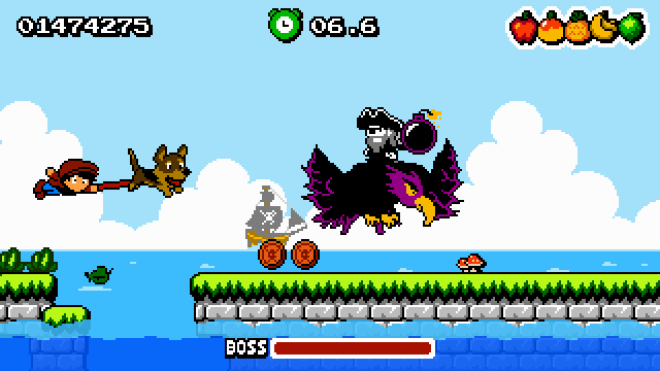
If you’re A-OK with all that, Miles & Kilo earns a very easy recommendation from me. I’ve had a blast with this series and hope there’s more to come in the future. It’s no Yoku’s Island Express or Runner3 in terms of breadth of content or complexity of mechanics, but that’s not what it aspires to be. It’s more of a throwback. Whether its gameplay reminded me of Adventure Island, its environments and enemies of Sonic The Hedgehog, its music and minecart sections of DuckTales, or its one-more-go challenge found in games like Super Meat Boy and 1001 Spikes, my short time with Miles & Kilo connected with me on many levels.
Oh, and for some inexplicable reason, it produced many flashbacks to Felix The Cat on NES. I can’t quite figure the correlation, but I, uh, felt I should share that for some reason.
Dang. Now I need to get myself a copy of Felix The Cat…
Note: I discovered a very rare bug in the final level that, upon dying in a very specific spot, forces you to close and relaunch the game. Thankfully, because of the game’s nature, you don’t lose any progress. The developer/publisher is aware of the issue and hopefully working on a fix.
Review copy provided by Four Horses
